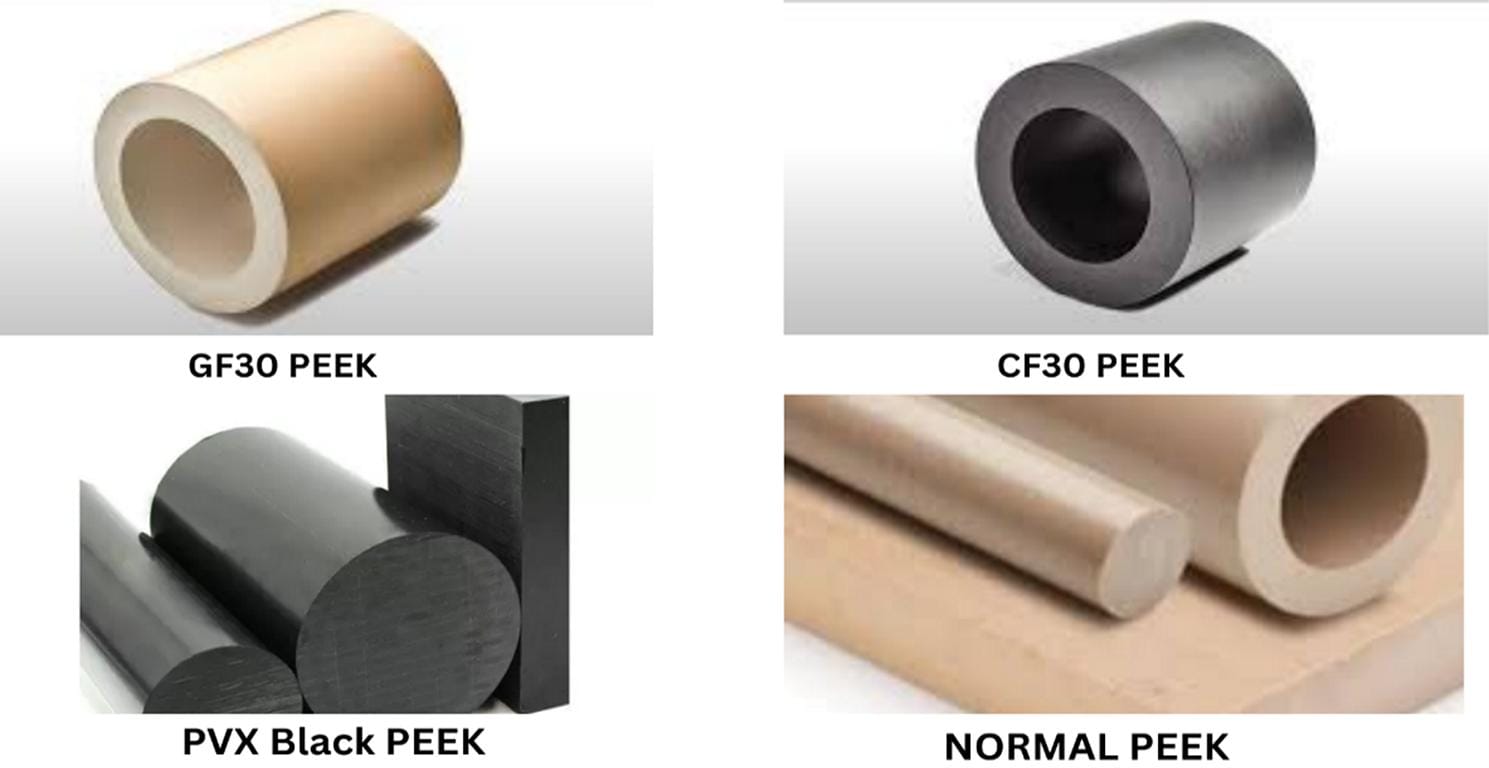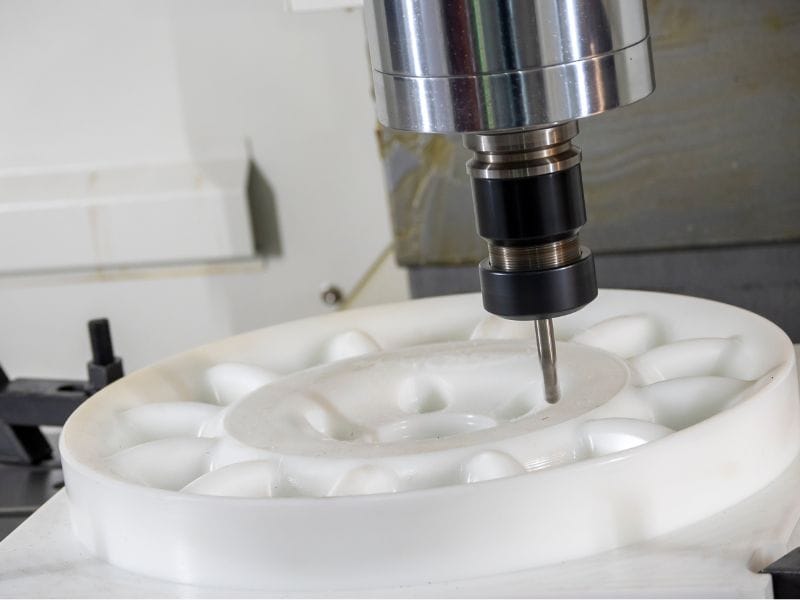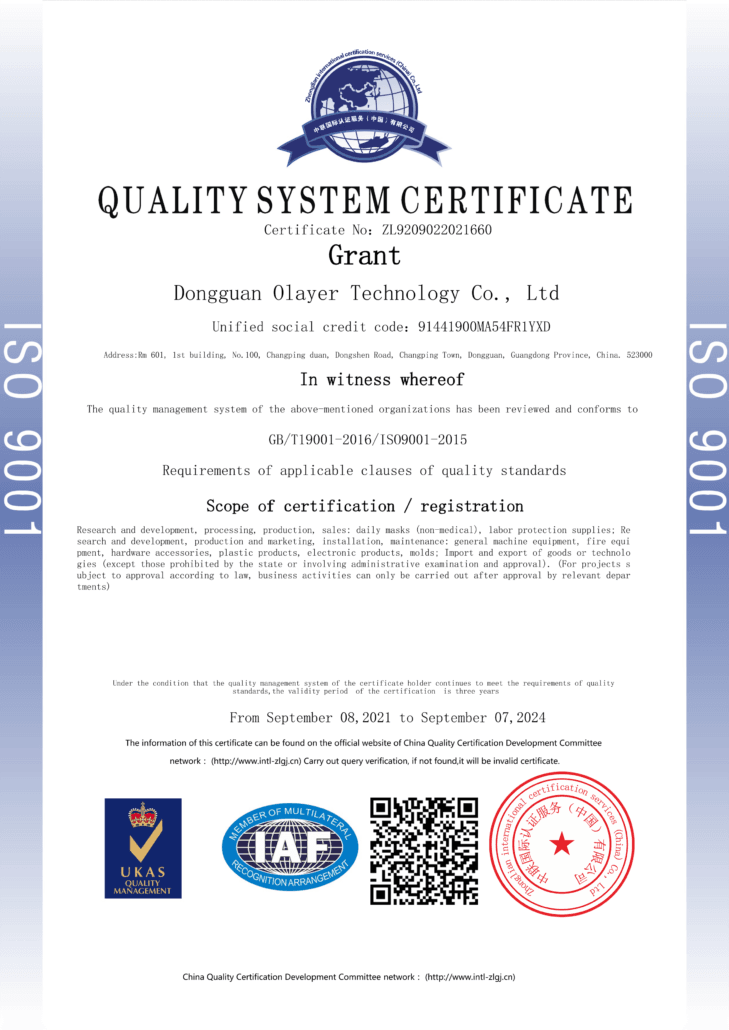Polyether ether ketone, is a semi-glasslike polymer, bearing elite thermoplastic performance with phenomenal strength and flexibility. It is biocompatible with a high melting point of around 343°C.It has great mechanical, thermal and chemical properties. PEEK injection molding has high strength-to-weight ratio, excellent dimensional stability, wear resistance and fatigue resistance. It belongs to Poly Aryl Ether Ketone (PAEK) group of materials which are manufactured through step-growth polymerization process. Although this thermoplastic opposes many synthetics and chemicals, yet at the same time a few acids can corrode it.
Additionally, it bears less UV opposition, however can be effortlessly disinfected and offers high wear resistance. This method is used to make good quality plastic parts from polyether ether ketone. This process produces parts which have high dimensional accuracy, high strength, stiffness. great mechanical properties, and biocompatibility. These parts also find applications in essential sectors, for example, surgical equipment and high-temperature seals for airplane engines, sector of gas and oil, automotive, and electronic gadgets.

Process of PEEK Injection Molding
This process is highly mechanized which is used to make parts from this high-performing thermoplastic material. This method includes melting of PEEK pellets and injecting the liquid material into a mold cavity at high pressure. After that the mold is cooled down, and the solidified part is got ejected from the mold. This process permits the production of parts with complex design, precise and repeatable parts with a high degree of accuracy and consistency.
This process consists of the following major steps.
Material Preparation
This is very important step considering the hygroscopic nature of PEEK which make the PEEK prone to absorb moisture from the air. Subsequently this can lead to produce defects during molding process. In order to prevent that from happening the resin must be thoroughly dried before processing. Generally drying involves heating the resin up to the temperature of about 150°C for a period of 3 to 4 hours.
- Injection Molding Machine Setup
- a) Machine Selection: In order to carry out the process smoothly a robust injection molding machine with high temperature withstanding capabilities is required. The machine should have corrosion resistant parts keeping in view the abrasive nature of PEEK. The abrasive nature of PEEk can start increasing the wear on machine parts so maintenance of machinery and use of wear resistant material become necessary.
- b) Temperature of Barrel: It is very critical parameter to be controlled for smooth functioning and to get optimum output. Keeping in view the grade of PEEK being used, temperature of the barrel of the injection molding machine is set between 360°C to 400°C.
- c) Temperature of Mold: Mold temperature is also very important parameter to achieve proper crystallization. In order to gain proper structure temperature is kept between 160°C to 200°C.
- Mold Design
Material Flow: The mold design is very important factor so the mold must be designed to accommodate the high viscosity of PEEK. Prime factors such as the gate design, runner systems, and venting must be taken in consideration to ensure proper material flow and to avoid defects.
Thermal Management: In order to maintain uniform temperatures and reduce cycle times proper cooling channels within the mold are essential.
- Injection Process
Injection Phase: In this phase the heated PEEK is injected into the mold cavity under high pressure. Because of the PEEK’s high viscosity, pressures typically range from 100 to 200 MPa (14500 to 29000 psi).
Packing and Holding: After the first phase is done and initial injection has been carried out, additional pressure is applied to pack the material into the mold cavity, by doing so it is ensured that the part is fully formed and free of voids. Moreover, this holding phase also compensates for material deficiency because of shrinkage as it cools down.
Cooling: This step is of high importance as it influences the crystallinity and mechanical properties of the end result. During this stage the mold and part must be adequately cooled before ejection. However, the cooling time varies depending on the part’s thickness and complexity as thicker and more complex part will require more time for this phase completion. Moreover, consistent monitoring of the molding parameters is necessary to maintain the quality of the PEEK parts. Because deviations in parameters such as temperature, pressure, or cooling rates can result in defective parts
- Part Ejection
Ejection System: During this phase, once the part has been completely solidified and is sufficiently cooled, the mold opens, and the part is ejected. Ejection process needs to be carried out carefully considering PEEK’s stiffness. The systems should be planned in a way to limit stress on the part being ejected.
- Post-Processing
- a) Inspection: After molding, parts are inspected and are checked for imperfections like warping, voids, or incomplete filling to guarantee the quality.
- b) Annealing: Often molded PEEK parts go through a annealing heat treatment process to ease inner stresses and to enhance dimensional stability. This cycle includes heating the parts to a particular temperature and afterward cooling them at a controlled rate.

PEEK Injection Molding Benefits
PEEK injection molding has several advantages including followings:
1.Excellent Mechanical Properties
It has superb mechanical properties including high strength, stiffness, and durability. This makes it a good choice for applications like gears, bearings, and clinical inserts, where superior performance is a significant prerequisite.
- Resistance at High-Temperature
PEEK has great thermal properties and can endure high temperatures up to 250°C while still keeping its mechanical properties. This permits it to be reasonable for use in high temperature application.
3.Chemical Resistance
This material is profoundly impervious to chemical and synthetic compounds like acids, bases, and solvents. This property guarantees long life span and reliability and to be utilized in extreme chemical environments.
4.Dimensional Stability
PEEK maintains its shape and size even at high temperatures and possesses excellent dimensional stability. This important property makes it suitable for applications where tight tolerances and dimensional accuracy is a prime requirement.
5.Wear and Abrasion Resistance
PEEK bears outstanding wear and abrasion resistance and is a good option to be used in applications where parts are subjected to high levels of friction, movement and wear. This important property extends the lifespan of parts like bushings, seals and pump components.
6.Biocompatibility
PEEK finds its application in medical applications as it is biocompatible and bioinert. It implies that it doesn’t respond adversely with biological tissues. Along these lines, this is utilized in implantable clinical gadgets including surgical instruments, dental inserts, and orthopedic devices where biocompatibility is fundamental.
7.Low Moisture Absorption
PEEK absorbs minimal moisture as a result it ensures dimensional stability and consistent performance in humid or wet environment. This characteristic is particularly very important for electrical and electronic components.
8.Excellent Insulation Properties
PEEK has great electrical protection properties, that makes it ideal for electronic parts and insulating parts in electrical applications. Besides, it keeps up these properties even at high temperatures.
9.Lightweight
PEEK is relatively lightweight and has high strength as compared to metals. This benefit is extremely gainful in ventures where reducing weight can increase fuel efficiency and high performance in automotive and aerospace industry.
10.Ease of Processing
Injection molding of PEEK offers high precision when dealing with complex geometries. So, it allows good dimensional accuracy and surface finish, making it ideal to be used for intricate parts. Moreover, this process also supports high production volumes with consistent quality.
11.Flame Resistant
PEEk has fire resistant properties and furthermore creates exceptionally low degrees of smoke and poisonous gases when it is exposed to fire. Thus, it is appropriate for applications where strict fire security standards are required, like in transportation and building materials.
12.Radiation Resistance
PEEK is exceptionally resistant to radiation, including gamma rays and X-rays. Thus, it finds its applications in the clinical field and atomic industry where openness to radiation is normal.
13.Environmental Stability
When considering environmental stability and environmental factors PEEK maintains its properties over a wide range of environmental conditions. This includes extreme temperatures, radiation, and exposure to water or chemicals. This stability makes sure long-term reliability in numerous demanding applications.
PEEK Injection Molding Limitations
PEEK (Polyether Ether Ketone) injection molding, while offering numerous advantages does have some limitations as follows:
1.High Material Cost
PEEK is significantly expensive as compared to many other thermoplastics. This can make the overall manufacturing process being costly, especially when production is at large scale.
2.Processing Challenges
When PEEK is processed it requires high temperatures, normally somewhere in the range of 350°C and 400°C, which require specific equipment which can cause more energy utilization.
- Sensitivity to Moisture
PEEk is exceptionally delicate to dampness so it should be appropriately dried prior to handling. The final product would have defects if PEEK is not dried before processing.

PEEK injection molding Applications
It is utilized in various businesses because of its extraordinary properties. Here are some detailed applications across different sectors:
1.Aerospace
- a) Structural Components: Its high strength to-weight ratio and thermal stability make it appropriate for underlying parts in airplanes and rockets.
- b) Seals and Bearings: It has low and wear and friction resistance for parts like seals, bearings, and bushings which need to endure high loads and temperatures.
- c) Insulation Parts: It has brilliant dielectric properties which permit it to be appropriate for electrical insulation parts in aviation applications.
- Automotive
- a) Engine Components: Engine parts require chemical resistant material which can withstand high temperature as well. So, PEEK is used to manufacture gears, gaskets, and seals.
- b) Transmission Parts: Parts of transmission are made from PEEK because it provides low friction and durability.
- c) Under-the-Hood Applications: Parts which are made of PEEK can endure the extreme conditions in the engine, including high temperatures and exposure to automotive fluids.
- Medical
- a) Implants: Its biocompatibility makes it reasonable to be utilized for inserts like spinal fusion gadgets, dental inserts, and muscular parts.
- b) Surgical Instruments: PEEK has capacity to endure continued autoclaving utilized for careful instruments that require cleansing.
- c) Medical Device Components: This is used in the creation of various clinical gadget parts in view of its chemical resistance and dimensional stability.
- Electronics
- a) Connectors and Insulators: Its outstanding dielectric properties and thermal stability are great for producing electrical connectors and encasings.
- b) Semiconductor Manufacturing Equipment: Its ability to resist chemicals and having good mechanical properties are advantageous in the severe conditions of semiconductor producing equipment and machinery.
- c) Cable Insulation: It is additionally utilized for high-performance cable insulation in high demand applications.
- Oil and Gas Sector
- a) Seals and Gaskets: PEEK has the properties to resist chemicals and high temperatures. This makes it appropriate for seals, gaskets, and valve seats utilized in oil and gas exploration and extraction.
- b) Downhole Components: It is used in downhole components because of its mechanical strength and ability to withstand extreme conditions.
- Industrial Applications
- a) Pump Components: Chemical resistance and durability properties of PEEK make it reasonable for the vast majority parts in siphons and blowers.
- b) Wear Parts: It is likewise utilized in high-wear conditions for parts including pinion wheels, bushings, and bearings.
Chemical Processing Equipment: Its protection from many synthetic compounds makes it reasonable for various parts in chemical processing equipment.
7.Food Sector
- a) Equipment of Food Processing: Components manufactured from PEEK has the ability to resist high temperatures, food acids and cleaning chemicals. Subsequently these components are used in equipment of food processing.
- b) Packaging Machinery: The components made from PEEK have good mechanical strength and chemical resistance and are utilized in packaging machinery.
- 3D Printing
High-Performance Prototypes: It is utilized for 3D printing also. The prototypes and end use products requiring high strength and thermal stability are manufactured from it.
- Consumer Goods
- a) High-End Sporting Equipment: Properties of being light weight and high strength make it ideal for producing top of the line outdoor supplies including bicycle parts and racket frames.
- b) Durable Consumer Electronics: Many consumers electronic components which are durable are manufactured from it.
Conclusion
Thermoplastic components of top-notch performance are produced from injection molding of PEEK. This method is very effective in imparting remarkable properties of mechanical strength, chemical resistance and high thermal stability. Subsequently products bearing these properties finds their applications in enterprises like aviation, clinical, automotive and electronics.
The upgraded injection molding process takes into account the creation of complex and accurate products with phenomenal repeatability and negligible material waste. To accomplish the best outcomes, it is exceptionally fundamental to control handling boundaries like temperature, pressure, and cooling rates.By utilizing the exceptional properties of PEEk through an organized injection molding process, mold manufacturers can create top notch parts that meet extraordinary presentation and strength guidelines.


